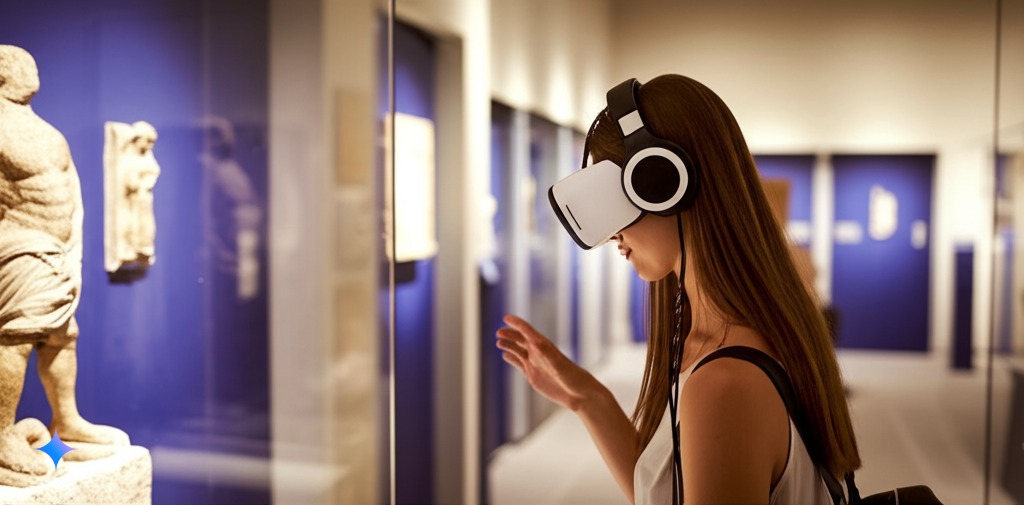
Discover how AI voice technology in museums is revolutionizing visitor experiences through interactive storytelling, breaking language barriers, and preserving cultural heritage. Learn about real-world applications from leading museums and how these smart audio guides are making art and history more accessible to everyone.
Introduction: The Voice Revolution in Cultural Spaces
Remember the last time you visited a museum? Those clunky audio guide devices with their confusing buttons are quickly becoming museum pieces themselves! AI voice technology in museums is completely changing how we explore cultural spaces. Instead of pressing buttons to hear pre-recorded facts, visitors now chat with smart tour guides that answer questions, tell stories, and adapt to what people are looking at. Voice AI for museums is creating experiences that were impossible just a few years ago.
Museums worldwide are trading in those old-school recordings for voice systems that actually talk with you, not just at you. The International Council of Museums (ICOM) has seen amazing results after adding AI museum guides to their exhibits – people stay longer, learn more, and actually remember what they saw! Enhancing museum experiences with AI voice technology has proven benefits for both visitors and institutions.
What makes this shift so exciting is how these new AI guides turn a regular museum visit into something that feels alive and personal. Whether you’re a history buff wanting deep details or a tourist who speaks a different language, AI tour guide technology can now match what you need, exactly when you need it.
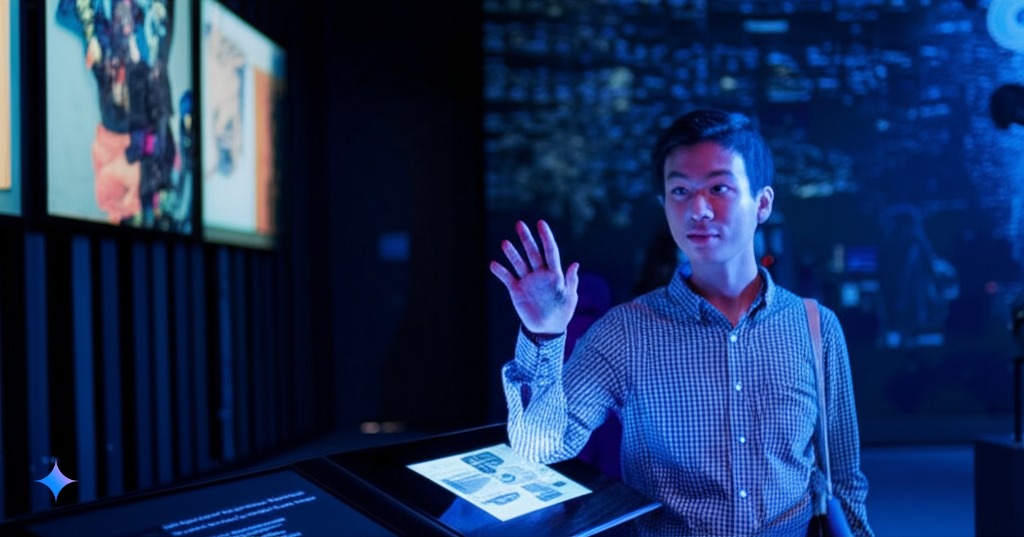
Core Technologies Powering Modern AI Voice Systems
So what’s actually making these smart museum guides work? Let’s break down the cool tech that powers today’s AI-powered tour guides without getting too techy about it. The development of AI-powered multilingual museum audio guides has been revolutionary for international tourists who can now enjoy exhibits in their native language.
Natural Language Processing (NLP): The Art of Understanding Questions
Think about how frustrating it is when voice assistants on your phone don’t understand what you’re asking. Museum AI needs to be much better! Tools like Waddi AI, used on Fanø Island in Denmark, can understand questions like “Who painted this?” or “How old is this statue?” and answer naturally, just like a human guide would.
The reason this matters is simple – visitors can ask whatever they’re curious about instead of just hearing a standard script. The best part? You don’t just stand there listening to boring stuff anymore! You see something cool and go ‘What’s this thing about?’ and boom – you get answers! Like having a buddy who’s a total museum geek but actually fun to hang with. No more pretending to care about random facts – just ask about the stuff you actually think looks interesting! This is how voice recognition technology in museums is creating truly personalized museum tours for each visitor.
Emotional Tone Modulation: Matching the Mood to the Moment
Some exhibits are fun and lighthearted, while others tell serious or sad stories. AI museum narration now adjusts its tone to match what you’re seeing. LOVO AI can switch between an excited voice for interactive children’s exhibits to a more respectful tone when discussing historical tragedies. You know how some exhibits are fun and others are about war or sad stuff? These interactive audio guides get that! They don’t talk about everything in the same boring robot voice. LOVO AI sounds excited for the cool stuff and more serious for the heavy topics. Because duh – nobody wants to hear about disasters in a peppy, cheerful voice! These are some of the amazing benefits of using AI for guided museum tours.
Context-Aware Systems: Knowing Where You Are
Ever had a guide start talking about an exhibit you haven’t even reached yet? Super confusing, right? Modern AI-driven audio tours use GPS and indoor positioning to know exactly where you are in the museum. It’s like having a guide with perfect timing! This is just one example of how AI voice assistants enhance museum visitor experiences in practical ways.
Ever been stuck with those old museum guides that start yapping about the wrong exhibit? So frustrating!
Now the smart ones actually know where you’re standing! VoiceMap’s GPS-guided tours follow you around and start talking about whatever you’re looking at. No buttons, no typing codes – it just works! Stick your phone in your pocket and just enjoy looking at the cool stuff. The voice tells you everything without you having to mess with anything! The best museum guide apps use this location-based technology to create seamless experiences.
Synthetic Voice Cloning: Bringing History to Life
One of the most fascinating advances is recreating voices from the past. FLIKI.AI specializes in creating rare dialect and accent options that can make historical exhibits feel authentic. This technology is part of a broader trend of using AI for interactive museum experiences that go beyond basic information delivery.
Imagine visiting an Ottoman Empire exhibit and hearing explanations in the proper historical accent. This technology helps transport visitors back in time, creating a more immersive experience than standard narration. These immersive features demonstrate how AI voice technology is transforming museum tours from passive experiences into engaging journeys.
Museum-Specific Applications

Museums have unique needs that regular voice assistants can’t handle. Let’s look at how AI voice technology in museums solves specific problems in these cultural spaces. Many institutions are now implementing adaptive museum storytelling techniques and using cultural preservation AI to maintain both tangible and intangible heritage.
Breaking Language Barriers
Ever visited a museum in another country and wished the information was in your language? Many museums now use Speechify to offer real-time translation for international visitors. Real-time language translation AI is breaking down barriers that have historically limited museum access.
Andovar, a company specializing in museum accessibility, reports that Asian tourists particularly benefit from these translation capabilities. For example, the Louvre in Paris now offers AI-generated tour content in multiple languages, making their incredible collection accessible to millions more visitors. These AI-powered multilingual audio guides for museums are revolutionizing cultural tourism.
The Louvre now has tours in tons of languages, which is awesome if you’re visiting from another country. You can stand in front of famous paintings and hear all about them in your own language right through your phone!
You just scan one of those square barcode things, pick your language, and that’s it! Instant translator in your pocket! Way better than those days when you’d stare at stuff having no clue what you were even looking at!
Enhancing Emotional Engagement
Let’s be honest – some museum descriptions can be pretty dry. But new interactive museum AI is changing that by making art and artifacts come alive through storytelling. Some of the best AI-driven tour guide apps for museums now feature narrative approaches rather than just presenting facts.
Google’s “Mice in the Museum” project adds whimsical AI voices to art interpretation, where tiny animated mice discuss famous paintings from different perspectives. It’s charming and helps visitors see familiar artworks in fresh ways. This approach shows how AI for cultural experiences can reimagine traditional interpretation methods.
Murf.ai takes this idea further with tone markers that read the room. Their technology lets museum content creators add specific emotional cues like <excited>, <solemn>, or <mysterious> to scripts. This helps create more engaging narratives around artifacts, especially for children and visitors who might otherwise lose interest in traditional exhibits.
If you work with content creators in other fields, you might recognize similar technology being used there too.
Preserving Lost Dialects
Museums aren’t just about preserving physical objects – they also preserve culture, including how people spoke in different times and places. Cultural preservation AI is playing an incredible role here. How museums use AI to create interactive audio guides often involves elements of cultural preservation alongside visitor engagement.
FLIKI.AI has pioneered recreating extinct accents for historical exhibits. In one impressive example, they recreated Ottoman Turkish accents for 15th-century displays, giving visitors a sense of how people actually sounded hundreds of years ago.
This technology helps keep disappearing languages and dialects alive, turning museums into living archives of human speech. The evolution of text to speech technology has made these breakthroughs possible.
AI Tour Guides: Beyond Basic Navigation
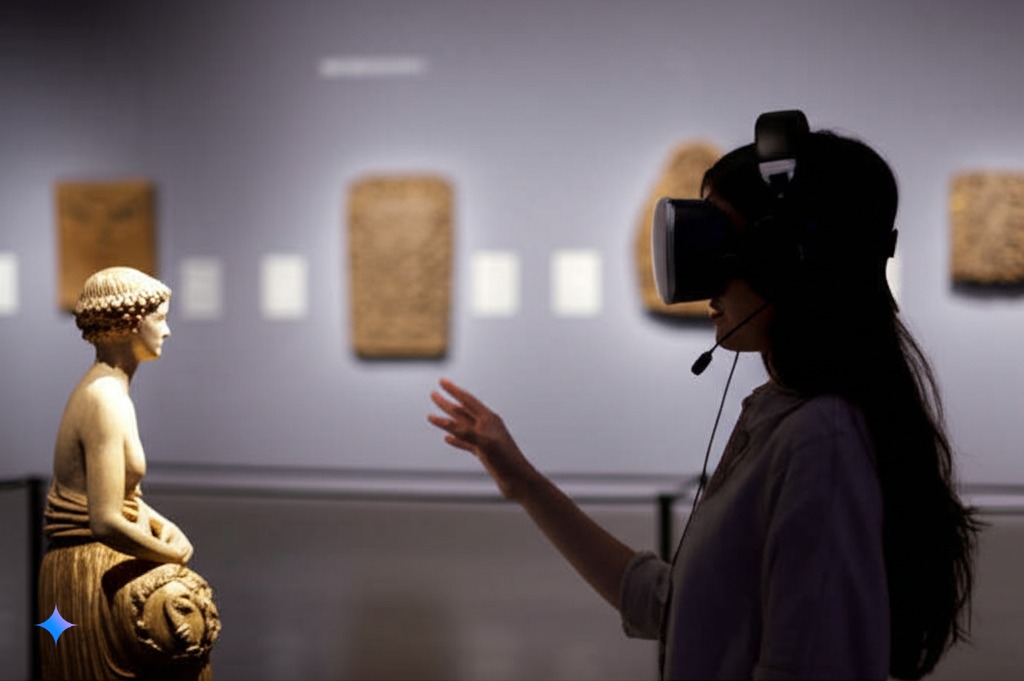
Museum guides are just the beginning. AI voice technology in museums is expanding beyond building walls and into the broader tourism experience. The development of AI tour guides for sustainable tourism is helping reduce overcrowding at popular sites while bringing attention to lesser-known cultural treasures. Many museums are using AI speech recognition technology for real-time museum tours that respond to visitor interests.
Hyperlocal Storytelling
Traditional tour guides often stick to major landmarks and well-known stories. AI guides can include the small, fascinating details that make a place unique. Voice AI for creating personalized museum tours has proven especially popular with repeat visitors who want deeper insights.
On Fanø Island in Denmark, Waddi AI discusses everything from local tidal patterns to Viking history as visitors walk around. This level of detail would be impossible for human guides to memorize for every location.
VoiceOverMaker.io lets tourism boards easily create regional folklore trails with bulk export features, so visitors can hear the local legends and stories that make each place special.
Ethical Crowd Management
One surprising benefit of AI museum guides is better crowd control. AI can predict visitor flows and suggest less crowded areas of museums in real time.
The Smithsonian uses this technology (developed by Showtime Zone) to reduce congestion around popular exhibits. The AI might say, “The Mona Lisa has a 30-minute wait right now, but the incredible Dutch Masters collection is quiet and just around the corner.”
This helps spread visitors throughout museums more evenly, creating a better experience for everyone and protecting sensitive exhibits from overcrowding. It’s a great example of how AI improves accessibility in public spaces.
Trauma-Informed Narration
Some museum content deals with difficult subjects like war, genocide, or colonization. Smart tour guides now adjust their tone and content when discussing sensitive topics.
For Holocaust memorials and similar exhibits, AI voices can switch to a more respectful tone and offer appropriate warnings before sharing disturbing information. This helps visitors engage with difficult but important history in a more supportive way.
Real-World Use Cases
Let’s look at some actual results from museums using this technology. These examples show the real impact of AI-guided museum experiences on visitor engagement and satisfaction:
ICOM’s Accessibility Boost
The International Council of Museums (ICOM) reported a 40% increase in visitor engagement after adding Spanish and French AI voiceovers to their exhibits. International visitors spent significantly more time with exhibits when information was available in their native languages.
Waddi’s Impact on Tourism
On Fanø Island, implementing Waddi AI’s QR-activated guides led to a 300% growth in tourism over just one season. Visitors appreciated being able to learn about the island’s nature and history at their own pace, with or without internet access.
Google’s Artistic Experiment
Google’s Arts & Culture Lab created an installation where AI-animated lips discussed art history, essentially bringing paintings to life for conversations with visitors. This playful approach got people talking about classic art in new ways and attracted younger visitors who might normally skip museum visits.
These real-world examples show that AI-guided museum experiences aren’t just tech for tech’s sake – they’re actually improving how people connect with cultural heritage.
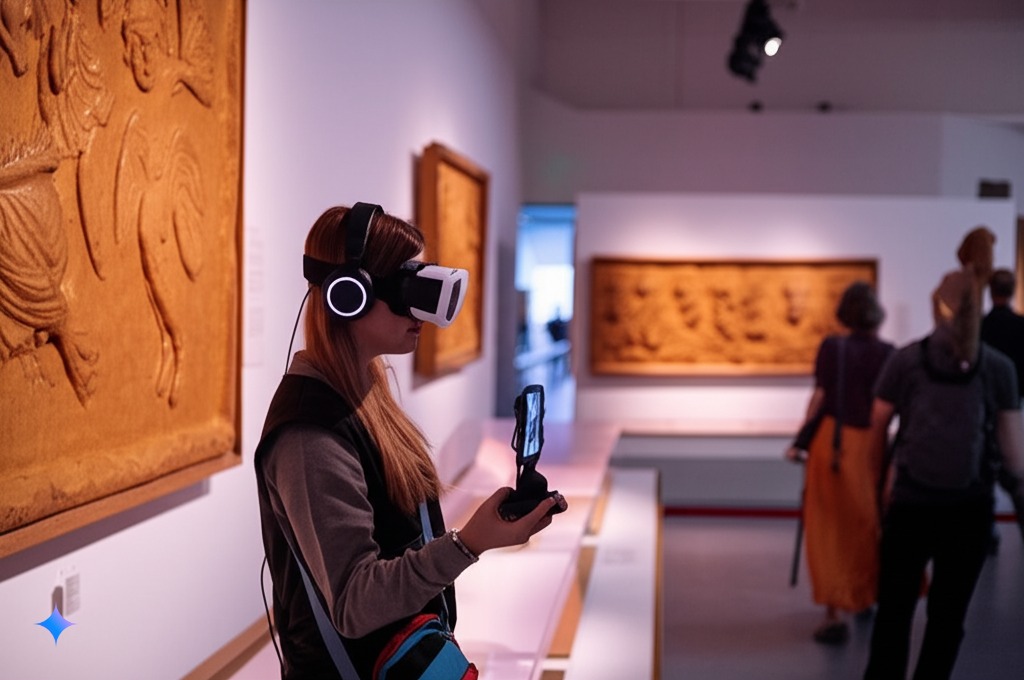
Challenges & Ethical Considerations
Despite all the benefits, museums using AI voice technology face some important challenges and ethical questions. Issues of AI voice authenticity and potential cultural bias in AI narration are concerns that responsible institutions must address. As AI museum guides become more widespread, these ethical considerations become increasingly important.
The Human Element
There’s valid concern about AI replacing human storytellers and guides. Many cultures have oral storytelling traditions where the human connection is essential to cultural transmission.
Some museums address this by using hybrid models – human-curated scripts delivered by AI voices. The Musée d’Orsay in Paris maintains this balance by having historians and curators create content that AI then delivers in multiple languages.
Cultural Representation and Bias
AI museum narration needs to represent diverse perspectives accurately. Early AI systems often reflected Western cultural biases in how they described artifacts from other cultures.
Museums must ensure their AI systems present culturally sensitive and accurate information, especially about indigenous artifacts or items acquired during colonial periods. This means involving representatives from the cultures being portrayed in the development of AI narratives.
For anyone interested in this aspect, our guide on voice SEO and content optimization explores related issues.
Future Trends
What’s next for AI voice technology in museums? Here are two major developments we’re already seeing the beginnings of. The rise of generative AI for cultural heritage is particularly exciting for preserving and sharing endangered cultural traditions. AI-generated audio tours are becoming increasingly sophisticated, with capabilities that were science fiction just a few years ago.
Voice Clones of Historical Figures
Pretty soon museums will have voices of actual historical people telling you about their own stuff! Just imagine – you walk up to an old painting and hear the artist be like, ‘So I was having a really weird day when I painted this…’
It’s not just fancy tech showing off – it makes history actually interesting! Instead of reading tiny boring labels, it’s like meeting the real people. Even kids who normally whine ‘I’m boooored’ in museums will be into it when they hear Einstein or Cleopatra talking directly to them!
And soon they’ll add touch stuff too! You’ll hold a copy of an ancient tool, and while the voice explains it, the thing vibrates to show exactly how people used it! Way cooler than just staring at stuff behind glass, right?
For more on how AI is transforming games with similar multisensory experiences, check out our related article.
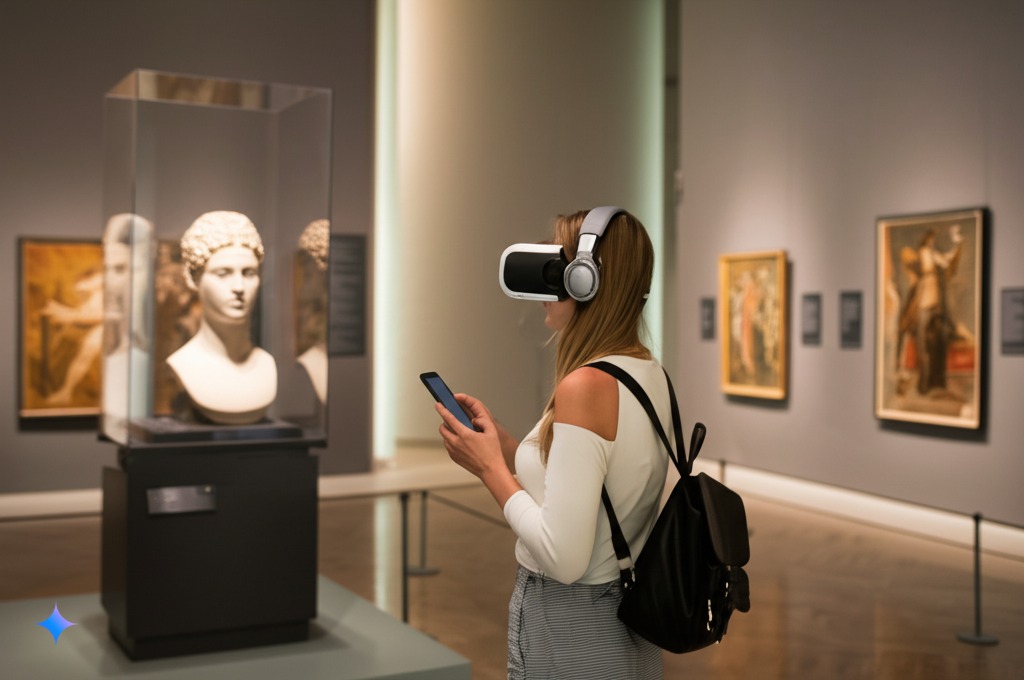
FAQs
Can AI voices mimic historical figures accurately?
Yes, with increasing accuracy. FLIKI.AI has successfully recreated historical speech patterns for exhibits about ancient civilizations. Their Ottoman Turkish model is used in Ephesus tours to give visitors a sense of how merchants and citizens might have sounded. However, when there are no recordings of someone’s voice, these recreations are educated approximations based on linguistic research.
Do AI guides work offline?
It depends on the system. VoiceMap’s GPS tours usually require internet connectivity, but many museums install on-site servers so their AI guides work without visitors needing data or WiFi. This is particularly important for museums in remote locations or historic buildings with thick walls that block signals.
How are museums addressing privacy concerns?
Most museum AI systems don’t record or store visitor questions for longer than needed to generate responses. Systems that use cameras for positioning typically process images locally rather than uploading them. Museums are increasingly transparent about their data practices, with many posting privacy policies near exhibits using AI technology.
Are AI guides accessible for visitors with disabilities?
The best AI museum narration systems are designed with accessibility in mind. Many offer volume adjustment, speed control, and text displays for deaf or hard-of-hearing visitors. Some museums are implementing specialized guides for visitors with visual impairments that provide more detailed descriptions of visual elements. These free text to voice online options help make culture more accessible to everyone.
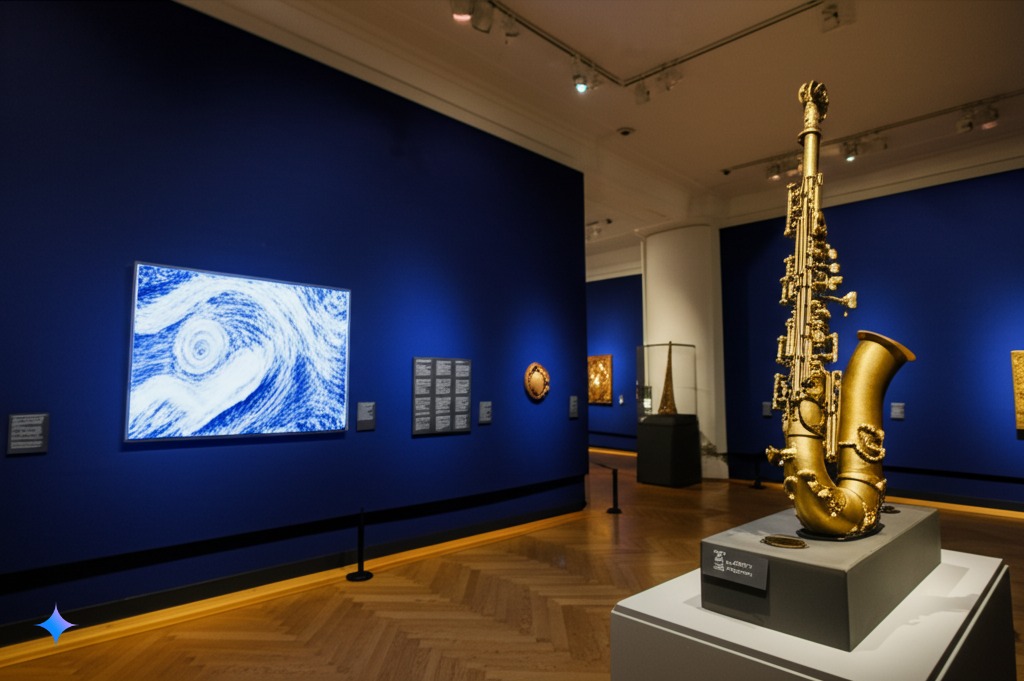
Conclusion: The Museum Visit of Tomorrow is Already Here!
Remember how we started talking about those clunky old audio guides? Well, AI voice technology in museums has blown past them like a spaceship racing a bicycle! It’s incredible to see how quickly talking exhibits and smart tour guides have gone from sci-fi fantasy to everyday reality in museums worldwide. The AI museum guides of today create experiences that were impossible even a decade ago.
Those boring “press button 3 to hear about this painting” days are over. Now your museum buddy actually listens, responds, and tailors information to what you’re interested in. Whether you’re visiting the Louvre or a tiny local history museum, voice AI for museums is making these spaces come alive in ways we couldn’t have imagined even ten years ago. Virtual tour AI has transformed the passive observation of artifacts into active conversations about history and culture.
The coolest part? This is just the beginning! Soon we’ll be having conversations with historical figures, experiencing multisensory exhibits, and discovering hidden stories that would have been lost without this technology. Museums aren’t just places to look at old stuff anymore – they’re becoming living, talking time machines. AI tour guide technology continues to evolve at an incredible pace, creating new possibilities with each technological advance.
So next time you visit a museum, try out their AI guide. Ask it weird questions. See what it knows. You might be surprised at how much fun learning can be when your guide can actually chat with you!
For those wanting to explore similar cool tech, check out our guides on AI voice generators for radio and creating AI voice assistants for websites.

